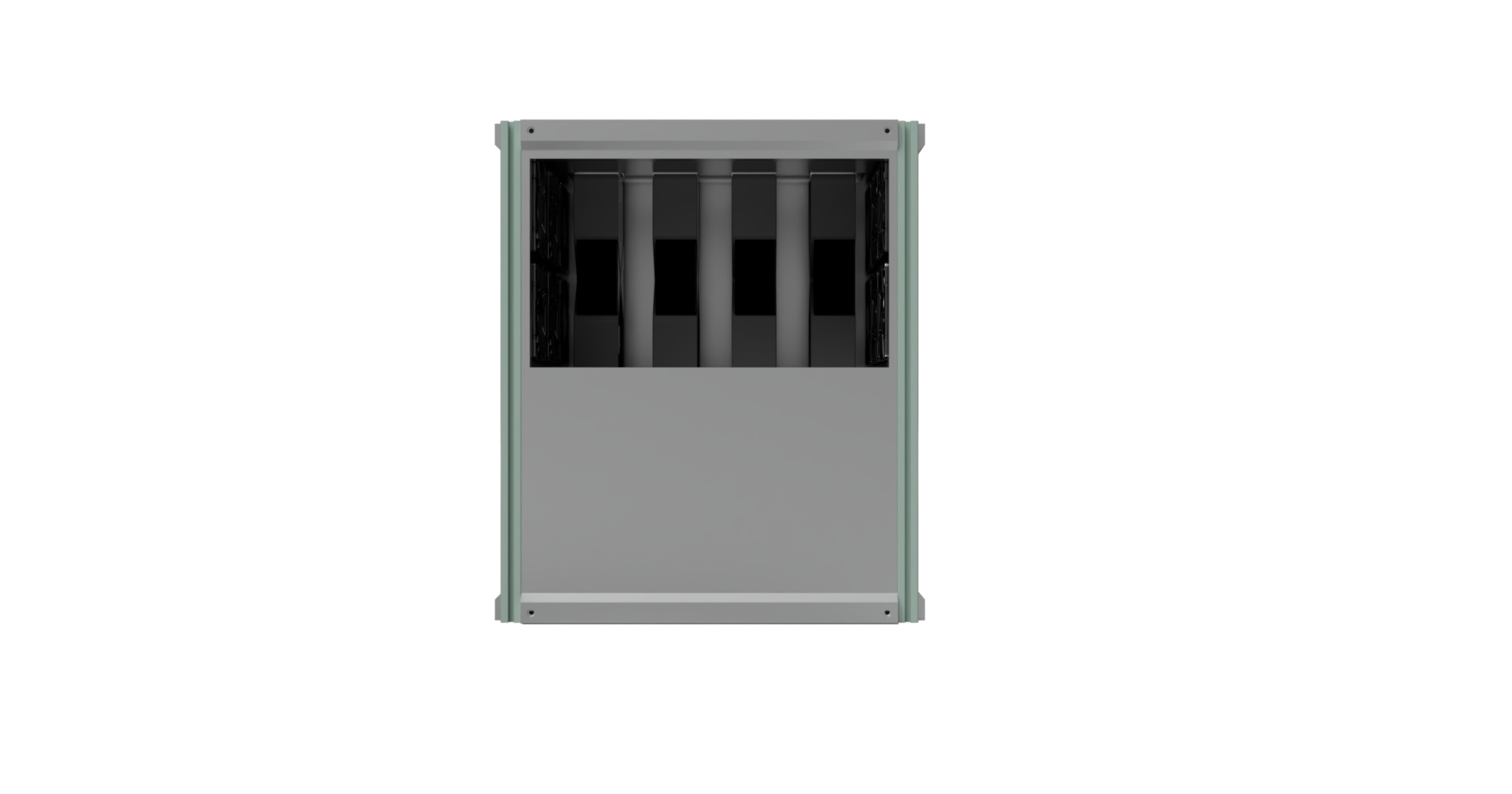Computer Case Company
sheet metal computer Case
Introduction
In the spring of 2021, a couple friends and I wanted to try and make bitcoin mining easier for the masses. Similar to the way commercial 3d printer companies like MakerLab, Prusia, Ender, and more have made 3d printing accessible to the masses, we wanted to make bitcoin mining accessible to the average Joe as well. Our idea for this was to create a bitcoin mining case (in progress). This project would help me understand the importance of tolerancing and quality control when creating many versions of a single part. Each prototype would cost my friends and I a lot of money so we had to make sure that each prototype had a clear set of things it was looking to test and do those things right the first time
Machine, Machine, machine!
One of the most important parts about producing a consumer product in high batches is ensuring the relationship between us and the manufacturer allows us to get the best price possible while maintaining quality and quantity. To ensure this, I looked at several manufacturing methods to produce our design. Since our design was primarily going to be made out of sheet aluminium or sheet steel, the manufacturing processes I took a look at were waterjet, CNC, and sheet metal stamping. Initially, CNC seemed like the best way moving forward so I looked at sheet metal companies that would benefit us. Two companies that interested me were a local one and one that was situated in China. Here are the prices for the local company.
As you can see, the price for a single prototype is significantly higher than if we were to manufacture it in bulk, so each prototype needs to be well thought out and answer as many questions as possible. The price for a single unit if we were to bulk order 100 units is still rather expensive, so that was in the back of my mind when it came to the final product. However, for now, this was a good start and it was better to spend the money and test out the prototype than to worry about the cost. Instead of choosing this company, we chose an overseas one as they offered a price that was closer to $1,000 for the finished model and a month shipping process -- a worthy tradeoff for the price change.
Funding rounds
Of course, to get the prototype manufactured we had to get funding, and my friends and I decided to develop a pitch to our university’s entrepreneurship program to get the support and funding required to make this idea a success. Since my team and I were presenting to a board of entrepreneurs and not people who knew the intricacies of the industry, our pitch presented the product in a way that helped explain the problem in the industry, giving details as to how blockchain mining works, and showing our how idea was a solution by comparing it to similar stories such as the 3d printing revolution. To see the pitch, I have included the PowerPoint file in this post. Our pitch was a success and my team and I gathered $5,000 in initial funding, just enough for a prototype and to hit the ground running.












From this point on, our project would go by a new name: “Bit Builders”
Schematics Galore
As talks with the manufacturer moved forward, they required us to send over schematics so they could visualize how the part would be manufactured. This was good experience for me as I have created drafts before but only for myself and never for an actual order. My emphasis on these drafts were to show the dimensions of the product and help to explain the small details as much as possible. The schematics are as follows.
Because of the nature of the design, some of the dimensions were hard to see, but I tried to make them as easy as possible through detailed views and explanations wherever needed. Luckily, this was good enough for a first draft and the parts were manufactured and on their way to us. Now all we had to do was wait for their arrival. Speaking of which, the first prototype came in around the beginning of summer and it was time to test and see what to improve for the second version. Here are a couple pics of the parts and the build as it progressed.
From design to reality
Overall the design was robust and exactly what we envisioned creating this idea. Most of our issues came from the thickness of the metal which meant that certain dimensions were no longer acceptable -- the graphics card being the biggest culprit there. Along with that, the power supply cutout was also not working for most standards so that would need to be changed for a second prototype. That design can be found in the next section.
we won’t fix it in post this time
For our second prototype, we wanted to make the rig a tad smaller to be more space efficient, the dimensioning to work better, and to have everything just a little bit more refined. With the redesign our team decided to reduce the amount of graphics cards vertically mountable and include a way to mount them traditionally.
… and the pot runs dry
And as of March 31st, 2022 this is where the product stands. Our initial funding stage has run out and our goal currently is to obtain new investors to create one more prototype and create a production spec. Hopefully I will be able to update this posting with the finalized product in the near future. To end, here are some more pictures of the computer case.

























